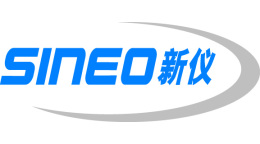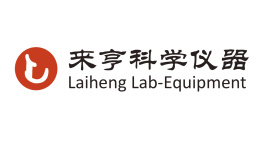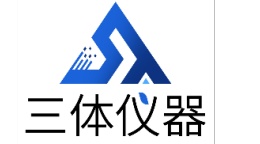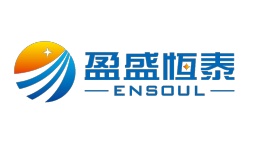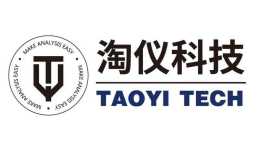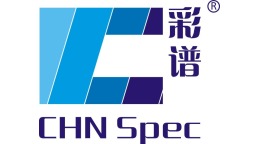方案详情文
智能文字提取功能测试中
266PART|1E|1 Basic principles of CA/MA and future trends 267Industrial advances of CA/MA technologies Chapter|12 Controlled and Modified Atmospheres for Fresh and Fresh-Cut Produce Chapter 12 Industrial advances of CA/MAtechnologies: innovativestorage systems David Bishop, James Schaefer and Randolph Beaudry *Storage Control Systems, Inc., Sparta, MI, United States,Department of Horticulture, MichiganState University, East Lansing, MI, United States Modified atmospheres have been described as having three primary effects onplant physiology of significant commercial relevance (Beaudry, 1999, 2000): 1. Inhibition of ethylene action (via low O2 and high CO2) 2. Inhibition of cut surface browning (via low O2) 3. Inhibition of decay (via high CO2) Additionally, modified atmospheres can reduce chlorophyll breakdown viahigh CO (and as a result of ethylene inhibition by both low O2 and highCO2) and suppress respiration by low O2. While low O2 can inhibit respiration(Kidd and West, 1927; Jurin and Karel, 1963), this inhibition has never beenunambiguously demonstrated to prolong storability. There are many reportsof elevated CO2 suppressing respiration, but this appears to be solely an effectof ethylene inhibition, rather than a direct effect of CO2 on the respiratorymachinery (Kubo et al., 1990). Innovation in the application of controlled atmosphere (CA) and modifiedatmosphere packaging (MAP) primarily revolves around more effective andprecise delivery of the respiratory gases O2 and CO2. Nevertheless, importantcontributions to storability in these environments are also being made throughthe judicial use of bioactive molecules, the most important of which is the eth-ylene action inhibitor, 1-methylcyclopropene (1-MCP). Areas of innovation in CA 1-MCP The discovery of 1-MCP (Sisler and Blankenship, 1996) promised improvedcontrol over ethylene responses in many crops. However, due to limitations https://doi.org/10.1016/B978-0-12-804599-2.00013-2Copyright C 2020 Elsevier Inc. All rights reserved.265 imposed by the biology of thecrop or the demands of the market place, thescope of benefit of 1-MCP was eventually seen as being rather limited after sev-eral years of experience with this compound (Sozzi and Beaudry,2007). In fact,after 20 years, apple fruit constitute 95% of the market for 1-MCP (Nazir Mir,personal communication). There are niche applications for avocado, pear, per-simmon, and banana among others, but the fit for the physiology and consumerdemand really is best for apple. Of all the fruits that ripen in response to eth-ylene, apple is somewhat unique in that consumer expectations are for an eatingexperience provided by an immature fruit (i.e., crunchy and tart) rather than aripe fruit, which is mellow and soft. Thus inhibition of ripening is beneficial toapple, but much less so for other fruit. Nevertheless, innovation in the applica-tion of 1-MCP continues with the development of preharvest sprays for thesuppression of preharvest drop in apple and the inhibition of ripening posthar-vest (De Ell and Ehsani-Moghaddam, 2010) and the use of multiple applica-tions during and/or after harvest (De Ell and Ehsani-Moghaddam, 2013;Mir et al., 2001). Dynamic controlled atmosphere Work by Tucker and Laties (1985) suggested that extremely low levels of O2(e.g., <0.2kPa) within bulky fruit tissues would support normal respiratorymetabolism. Gran and Beaudry (1993) demonstrated that apple fruit could sus-tain partial pressures of O2 in the range of 1.0-0.3 kPa without inducing fermen-tation, but would maximally inhibit ethylene action (Burg and Burg, 1967).These levels were significantly lower than commercially applied atmospheresat the time, but suggested that lower O2 levels were potentially useful. Techno-logical advances would be needed, however, to maintain O2 partial pressures inthis range. Subsequently, innovations in the construction of CA rooms such assealed, foam-filled wall panels, improved door sealing systems, and pressurecontrol features provided by breather bags and modern CO2 scrubbing systemshave improved room tightness dramatically since the early days of CA. Theimpact has been an improvement in the capacity for regulation of O2 andCO2. In addition, the development of efficient and inexpensive equipmentfor O2 regulation (e.g., pressure swing adsorption and hollow fiber membranetechnologies) in the 1980s and 1990s and the advent of computer-based systemsfor room monitoring and control have also contributed to improved atmospherecontrol (Bishop, 1990;Dilley, 1990, 2010; Mditshwa et al.,2018). Improvedregulation of CA room atmospheres opened the door for the development oftechnologies that would take advantage of new developments in sensors forthe creation of dynamically controlled atmospheres. Wolfe et al. (1993) firstdescribeda dynamic controlled atmosphere (DCA)system in whichcomputer-controlled sensors for O2 and CO2 would be used to assess respirationand thereby regulate that process through automatic atmosphere manipulation. DCA for apple storage has increased over the last 5 years, leading to reduc-tions in O2 concentrations from 1.2-2.0 to 0.4-0.8kPa O2. Storage at <1.0kPaO2 extends storage, but requires monitoring of fruit health to avoid damage.Competing DCA systems exist. Currently, three DCA technologies are in devel-opment or are commercially available.Each of the three DCA technologies isimplemented in roughly the same fashion: the O2 in the CA room is initiallyestablished at a safe level and the O2 is slowly decreased until the sensor systemindicates that the atmosphere is stressing the fruit. At this point, the O2 level israised to the previous, nonstressful level. These systems have the advantage ofbeing able to continually probe the lower oxygen limit, which apparently candecline after some period in low oxygen storage. The O2 levels in storages con-trolled by these systems have reached unprecedented low levels, often below0.5%. At these low O2 levels,ethylene action is essentially completely inhibited(Burg and Burg, 1967; Solomos, 2017) and some postharvest disorders,such asCO2 injury, may be suppressed to some extent (De Ell and Lum, 2017;Mditshwa et al., 2018). DCA has been demonstrated to slow ripening veryeffectively, being better at retarding firmness loss in apple than standard CAor even ultralow oxygen (ULO) storage (Thewes et al., 2015). It also effectivelysuppresses superficial scald without the use of the antioxidant, diphenylamine(DPA) (Zanella,2003). The first system to be described uses the emission of the fermentation prod-uct ethanol to control O2 (Schouten et al., 1997). Developed as the Storex (TheNetherlands) system, this technology operates by sensing ethanol as fruit turnanaerobic, but has not yet reached widespread commercialization. The Storexsystem uses a specialized fruit sample chamber. At this time, this chamber can-not be placed inside the CA room in North America due to patent restrictions ofa competing technology (i.e., SafePod). Testing fruit in a chamber outside theCA room raises the possibility of atmosphere and temperatures differencesbetween test fruit and fruit in storage. The second DCA technology uses chlorophyll fluorescence of the fruit todetect the lower oxygen limit (Prange et al., 2002). Harvest Watch (Isolcell,Italy) is a commercial system using 3 chlorophyll fluorescence sensors to mon-itor stress indirectly in 15-20 representative fruit. The physiological connectionbetween chlorophyll fluorescence and the tolerance of the fruit to low O2 is notwell understood. The Isolcell technology is perhaps the most widespread DCAtechnology in use at this time (Mditshwa et al., 2018). The third DCA technology uses a chamber connected to or within the roomto determine the respiratory quotient (RQ, the ratio of CO2 production to O2uptake), which is taken as a measure of fermentation (Bessemans et al.,2016; Schaefer and Bishop, 2014).One of the two current RQ technologiesis The Van Amerongen or My Dynamic (The Netherlands) system. Introducedin 2014, this RQ-based DCA technology measures the RQ of whole stores, butrequires expensive ancillary equipment, new store construction, stoppage ofcooling and CA control for a period of time, and can conceivably put the entire store at risk when testing lower Oz limits (LOL). The second RQ-based DCA sys-tem is known as the SafePod (United States) (Schaefer and Bishop, 2014). TheSafePod (US patent 10143210, Canada CA 2746152) allows fruit to be storedsafely at lower O2 concentrations <1kPa, lowering metabolic processes andmaintaining the quality of fruit for longer. The SafePod contains new generationof O2 and CO2 sensors allowing more accurate and stable measurement of O2/CO2. The SafePod monitors the respiration of a representative sample of thestored fruit in real time, alerting operators to changes in crop health during stor-age under low O2 conditions. It can be used to determine how to best optimize theO2 and CO2 regimes required to extend the storage life of fruit. The SafePod’sadvantage over the other technologies is that it provides the ability to respondto changing oxygen requirements during fruit storage. In part, this reflects theability to use the SafePod to measure the rate of respiration of the fruit sampleat the beginning of the store to help the operator determine the long-or short-termstorability of the entire store. Studying respiration characteristics can help deter-mine weaker stores (i.e., more mature and/or stressed fruit) from strong stores(less mature, healthier fruit), which helps operators rank their market timing. Innovations of SafePod overcome many practical issues of existing technol-ogy. SafePod is a 0.4m’chamber, fitted with internal gas sensors, filled with~750 fruit. It is placed in the CA store that is being monitored with freeexchange of gases with the store environment through ventilation valves. Elec-tronic closure of valves allows accurate periodic measurement of fruit respira-tion and RQ within the chamber by measuring gas content at regular intervals,providing accurate estimates of the respiratory behavior of the fruit in the sam-ple, which are taken to represent the fruit in the store. RQ of apples stored abovethe LOL range from 0.9 to 1.1 and increase to 2-5 under low O2 stress. The RQis measured in an airtight chamber, when the safepod isolation valve closes.Any presence of lime in the CA room to scrub CO2 will not interfere withmeasurements. A further innovation of SafePod is that the atmosphere canbe allowed to become more extreme than the rest of the store to explore the stor-age LOL limits without exposing the complete consignment to potentially dam-aging conditions, as is the case with the My Dynamic and Isolcell systems. Inaddition, SafePod can readily be integrated into new or old CA rooms and thecontrols can be integrated with installations using the post-2012 SCS 6000 CAmonitoring system. The system can also be “stand alone.” Additionally, amodified stand-alone lab-based“LabPod” has been developed using the sameO2 and CO2 sensing and control technologies. This system is suitable for CAresearch in commercial or laboratory facilities. Accuracy of gas composition measurement is essential for RQ-based tech-nologies to work. Success depends on the sensors, chamber design includingairflow both within the chamber and exchange with the surrounding atmo-sphere. High sensor sensitivity (i.e., to three decimal places) is needed to一increase reading stability by amplifying and smoothing data output. This pro-vides an additional benefit of reducing time required to make stable readings of CO2 and O2 and calculation of RQ. Barometric pressure compensation in themaster PLC controller is a needed feature to handle analyzer accuracy duringweather changes. The effect of small sensor deviation, when the barometricpressure in the outside atmosphere shifts, is compensated for to calculate andaccurate RQ. While all three technologies have the potential to adequately control O2and provide low O2 benefits, some distinctions may be important. The useof ethanol as a marker, while physiologically relevant, has the potential tobe misleading. If only a portion of the fruit is undergoing fermentation, theentire room is subject to regulation based on the response of those few. Fur-ther, once ethanol accumulates in a fruit, it takes many days for it to dissipate,slowing the response time of the system. Finally, ethanol is synthesized as aproduct of ripening, not just in response to fermentation, leading to the pos-sibility of“false positive"signals. The use of chlorophyll fluorescence issomewhat indirect, being in response to changes in the energy status of thechloroplast, rather than the respiratory machinery of the fruit cells. Boththe chlorophyll fluorescence and the SafePod RQ measurement systems relyon samples held in the CA room or in a chamber attached to the room and sointroduce the possibility that the samples may not be representative of theremainder of fruit in the room. Sensor technology for ethylene and other biomarkers Portable ethylene detectors that do not rely on gas chromatography emerged inthe 2010s that are able to reliably and specifically detect ethylene levels as lowas 0.1 ppm. Technologies evaluated include ring-down spectroscopy (Wahlet al., 2006) and nanoporous gold (Shekarriz and Allen, 2008) detectors thatpermit real-time monitoring of ethylene levels in gas streams pulled fromrooms. The commercial advantage for CA storage has not been effectively real-ized for this technology, although it may prove of some benefit in making deci-sions on the length of storage expectations for fruit just after harvest and perhapsfor decisions regarding opening CA rooms for moving fruit into the marketingstream. The use of volatile biomarkers is also being investigated for their suitabilityfor predicting storability and for market decisions (Rudell et al., 2009; Rudell andWatkins, 2011), but this concept has not yet been successfully commercialized. Areas of innovation in MAP In 2005, fresh-cut salads were estimated to be valued at approximately $3 bil-lion in the United States (Calderon, 2006). The 2014 estimate of the value ofpackaged fresh-cut produce in the United States by the Produce MarketingAssociation is $27 billion. Ironically, Platenius (1946) identified a need forinvestigating the keeping quality of chopped vegetables in packages 60 years before this widespread adoption. In what is referred to as “active”or“intelli-gent” packaging techniques, packages may be flushed with specific gas mix-tures designed to obtain a desired initial atmospheric composition, gases maybe actively released or scavenged in the package, a partial vacuum can beimposed, biologically active materials can be incorporated in the package,and so on (Ben-Yehoshua et al., 2005). Modeling The development of meaningful models for the design of packages to yield tar-get atmospheres is essentially a mature aspect of MAP technology, but one thatcontinues to remain relatively inaccessible to some produce packaging firms.The earliest work in this area dates back to the late 1950s and early 1960s(Jurin and Karel, 1963; Workman, 1959) and further developed in the 1980sand 1990s (Cameron and Yang, 1982; Cameron et al., 1989; Emond et al.,1991). Cameron et al. (1994) added the feature of temperature accommodationinto predictive models, permitting the prediction of O2 and CO2 across a rangeof temperatures once appropriate biological data regarding the temperature sen-sitivity of respiration was created/incorporated. Models advanced to includeestimating the risk of fermentation (Talasila and Cameron, 1995),dynamicchanges in the package headspace as a function of time and temperature(Hertog et al., 1998), and the presence and abundance of perforations (Hirataet al., 1996; Fishman et al., 1996). Lacking is a meaningful, publicly accessibledatabase that permits the package designer to incorporate biological data intothe design process. Nevertheless,packaging for many commodities is extremelysuccessful and target O2 and CO2 levels are reliably obtained using models forinitial design and trials under real-world conditions. Perforation technology The development of technologies for creating precise holes in packaging filmsis relatively recent. The perforations are typically between 50 and 250um indiameter. Two popular methods of making perforations include electrostaticdischarge and laser ablation. Electrostatic discharge is rapid, but does not allowfor precise perforation location or shape, although the process is less expensivethan lasers. Laser perforations are usually uniformly circular but may not becylindrical. In fact, they tend to be wider at the upper surface facing the laserand narrower at the bottom. Another method of perforations using hot needles isless commonly used for MAP. Another alternative for establishing perforationsis through the incorporation of ceramic materials, zeolites, volcanic rocks,CaCO3,or SiO2, all of which change packaging permeability. Perforations can be placed into essentially any film, permitting the use ofpolymers having little permeability to either O2 or CO2 and, if used, wouldcause anaerobiosis and fermentation. Consequently, nylon and other films with 2 high water permeability in MAP application can be used to enhance water vapormanagement (Ben-Yehoshua et al., 2005). Some perishables, notably tomatoesand peppers, benefit from slightly lower humidity in the package atmosphere,being less prone to decay development (Shirazi and Cameron, 1987,1992). Oneof the potentially useful characteristics of perforated packages is that perforatedpackages tend to deliver higher CO2 concentrations for a given level of O2(Vallejo and Beaudry, 2010). This may be highly beneficial if the package isto be used to suppress fungal decay or chlorophyll breakdown but may be inap-propriate for those products damaged by CO2 levels above 5%. Bioactive compounds Addition of bioactive materials to the package is not limited to MAP, but haspotential to contribute to the atmosphere modification or to interact with theproduct in such a way as to minimize deterioration or decay. For atmospheremodification, technologies that have been evaluated include absorption of oxy-gen (e.g.,iron powder) or CO2 (e.g., calcium hydroxide and activated carbon),release of CO2 (e.g., sodium bicarbonate), absorption of water vapor (e.g., silicagel, starch, salts, CaO), absorption of ethylene (KMnO4, activated carbon, zeo-lites, metal organic frameworks), and its release (Ethrel). Further, the benefits of1-MCP release into packages have also been evaluated (Nazir Mir, personalcommunication). A banana-packaging concept termed“RipeLock”employspackaging that creates an elevated CO2 atmosphere and, with an appropriatelytimed application of 1-MCP, extends the yellow life of ripening fruit. Commer-cial rollout is underway with this technology (Edagi et al., 2014; Mir, 2017). The inclusion of antimicrobial compounds in MAP has been a goal for manyyears, The influence of vapors of hydrogen peroxide, acetic acid, ethanol, chlo-rine dioxide, sulfur dioxide, and of aroma volatiles such as 2-nonanone and var-ious aldehydes has been investigated with relation to stored produce (Aharoniand Stadelbacher, 1973; Hamilton-Kemp et al., 1992; Leepipattanawit et al.,1997; Sapers et al., 2003; Song et al., 1996; Vaughn et al.,1993). Despite exten-sive research, widespread commercial adoption of antimicrobials in packages ofproduce has yet to occur. There are several hurdles to the implementation of thissort of technology. In some cases, the volatiles alter the aroma of the product towhich they are applied. Another potential pitfall is toxicity to the tissues. Theinclusion of antimicrobial compounds such as silver and immobilized bacterio-cides (e.g., penicillin) in the packaging film itself has also been investigated.However, the limited contact between the film and the surface of the productprevents effective decontamination of either human or plant pathogens. Sensors The incorporation of sensors in the packaging films has significant merit. In the-ory, the sensor system can alert store managers or consumers to unsafe food or can be used to develop a system to respond automatically to or to the packageenvironment or regulate package atmosphere. One interesting example of a sen-sor, RipeSense, was developed to indicate the ripeness of fruit in a package.This technology was successful technically, but failed to meet market demandsfor low cost. Smyth et al. (1999) introduced the idea of using an ethanol sensoras an indicator of fermentation in packages. However, no commercial productemerged from this innovation. Another interesting concept involved the idea ofcreating a temperature-sensitive“valve” for packages that would open when thepackages were exposed to temperatures above their design threshold (Pattersonand Cameron, 1991). However, the concept had limited utility in that there wasno simple way of protecting the film from high temperatures prior to beingformed into a package. Biodegradable plastics Disposal of plastics used in packages has presented a significant problem toconsumers and to communities required to manage the waste.In the UnitedStates, plastics (of which, fresh produce packaging forms a small portion) werereported to comprise approximately 10%-12% of the waste stream on a weightbasis in 1998 by the US Environmental Protection Agency. Additionally,thehalf-life of most polymers used in packages is measured in decades, if not lon-ger. There are several biodegradable materials that have been formed into func-tional polymers, the most successful of which is likely poly(lactic)acid (PLA)(Almenar et al., 2008), which has the potential to add value to the packagedproduct (Koutsimanis et al., 2012). Additional opportunities exist for the devel-opment of films developed from whey protein or polysaccharides, but little tono commercial success is in evidence to date. Prospects for the future If the last 20 years serves as an example of the advances possible in CA andMAP, it is very likely that new developments will continue to emerge. Majorbreakthroughs like the discovery of the benefits of atmosphere modificationto perishables, gas-selective properties of polymers, and ethylene action inhib-itors are behind us, but refinements in the application of the principles of CAand MCP will continue. In CA, it seems likely that additional sensor technol-ogies will emerge and that they will be integrated in the control systems man-aging stored fruits and vegetables.Similarly, sensors and monitoring systems toimprove control and decision making in MAP systems are likely. The majorhurdle in this application is to reduce implementation costs sufficiently todeliver enough value to the consumer that he will recognize the contributionof the technology and pay more for it. Alternatively, if the innovation doesnot cost more than a small fraction of the total packaging cost, it may proveto be sufficiently competitive to displace existing packaging systems. It is also 2 likely that some potential for new, somewhat unanticipated technologies relat-ing to food safety, traceability, and value-added activities contribute to both CAand MAP. References Aharoni, Y., Stadelbacher, G.J., 1973. The toxicity of acetaldehyde vapor to postharvest pathogensof fruits and vegetables. Phytopathology 63, 544-545. Almenar, E., Samsudin, H., Auras, R., Harte, B., Rubino, M., 2008. Postharvest shelf life extensionof blueberries using a biodegradable package. Food Chem. 100, 120-127. Beaudry,R.M., 1999. Effect of O2 and CO2 partial pressure on selected phenomena affecting fruitand vegetable quality. Postharvest Biol. Technol. 15, 293-303. Beaudry,R.M., 2000. Responses of horticultural commodities to low oxygen: limits to the expandeduse of modified atmosphere packaging. HortTechnology 10, 491-500. Ben-Yehoshua, S., Beaudry, R.M., Fishman, S., Jayanty, S., Mir, N., 2005. Modified atmospherepackaging and controlled atmosphere storage. In: Ben-Yehoshua, S. (Ed.), EnvironmentallyFriendly Technologies for Produce Quality. CRC Press, Boca Raton,FL, pp. 61-112. Bessemans, N., Verboven, P., Verlinden, B.E., Nicolai, B.M., 2016. A novel type of dynamic con-trolled atmosphere storage based on the respiratory quotient (RQ-DCA). Postharvest Biol.Technol. 115, 91-102. https://doi.org/10.1016/j.postharvbio.2015.12.019. Bishop,D., 1990. Controlled atmosphere storage. In:Dellino,C.V.J.(Ed.), Cold and Chilled StorageTechnology. Van Nostrand Reinhold, New York, pp. 68-98. Burg, S.P., Burg, E.A., 1967. Molecular requirements for the biological activity of ethylene. PlantPhysiol. 42, 114-152. Calderone, V., 2006. Valley's Agriculture Is Ever Evolving. Ag Outlook, Salinas, CA. June 12,2006. Cameron, A.C., Yang, S.F., 1982. A simple method for the determination of resistance to gaseousdiffusion in plant organs. Plant Physiol. 70, 21-29. Cameron, A.C., Boylan-Pett, W., Lee,J., 1989. Design of modified atmosphere packaging systems:modeling oxygen concentrations within sealed packages of tomato fruits. J. Food Sci.54,1413-1416.1421. Cameron, A.C., Beaudry,R.M., Banks, N.H., Yelanich, M.V., 1994. Modified-atmosphere packag-ing of blueberry fruit: modeling respiration and package oxygen partial pressures as a functionof temperature. J. Amer. Soc. Hort. Sci. 119,534-539. De Ell, J.R., Ehsani-Moghaddam, B., 2010. Preharvest 1-methylcyclopropene treatment reducessoft scald in“Honeycrisp”apples during storage. Hortscience 45, 414-417. De Ell, J.R., Ehsani-Moghaddam, B., 2013. Effects of rapid consecutive postharvest 11-methylcyclopropene treatments on fruit quality and storage disorders in apples. Hortscience48, 227-232. De Ell, J.R., Lum, G.B., 2017. Effects of low oxygen and 1-methylcyclopropene on storage disor-ders of“Empire”apples. Hortscience 52, 1265-1270. Dilley, D.R., 1990. Historical aspects and perspectives of controlled atmosphere storage.In: Calderon, M., Barkai-Golan, R. (Eds.), Food Preservation by Modified Atmospheres.CRC Press, Boca Raton, FL, pp. 187-196. ( Di l l ey , D.R. , 2010. C ontrolled a tmo s ph e r e storagechronology a nd te chno l o g y . Proc . 9 th In t ’'lC ont r oll ed At m o s p h ere C o nfere n ce. A cta H o r t . 857 , 4 95 - 50 2. ) ( Edagi,F.K., D.M. Becerra, N. Mir, E. McCaskey, F.M. T erra and R.L. McGee. 2014. Methods ofhandling papaya. U.S. Patent Application Publication US2014/0242235A1. ) PART |1 E Emond, J.P., Castaigne, F., Toupin, C.J., Desilets, D., 1991. Mathematical modeling of gasexchange in modified atmosphere packaging. Trans. ASAE 34, 239-245. Fishman,S., Rodov,V., Ben-Yehoshua,S., 1996. Mathematical model for perforation effect on oxy-gen and water vapor dynamics in modified-atmosphere packages. J. Food Sci. 61,956-961. Gran, C.D., Beaudry,R.M., 1993. Determination of the lower oxygen limit for several commercialapple cultivars. Postharvest Biol. Tech. 3,259-267. Hamilton-Kemp,T.R., MacCracken, C.T., Loughrin, J.H., Anderson, R.A., Hildebrand, D.F., 1992.Effect of some natural volatile compounds on the natural pathogenic fungi Alternaria alternataand Botrytis cinerea. J. Chem. Ecol. 18, 1083-1091. Hertog, M.L.A.T.M., Peppelenbos, H.W., Evelo, R.G., Tijskens, L.M.M., 1998. A dynamic andgeneric model of gas exchange of respiring produce: the effects of oxygen, carbon dioxideand temperature. Postharvest Biol. Technol. 14, 335-349. Hirata, T., Makino, Y., Ishikawa, Y., Katusara, S., Hasegawa, Y., 1996. A theoretical model fordesigning a modified atmosphere packaging with a perforation. Trans. ASAE 39, 1499-1504.Jurin, V., Karel, M., 1963. Studies on control of respiration of McIntosh apples by packagingmethods. Food Technol. 17, 104-108. Kidd, F.,West, C., 1927. A relation between the concentration of oxygen and carbon dioxide in theatmosphere, rate of respiration, and length of storage of apples. Food Investigation Bd. Rpt.London 1925, 41-42. Koutsimanis, G., Getter, K., Behe, B., Harte, J., Almenar, E., 2012. Influences of packaging attri-butes on consumer purchase decisions for fresh produce. Appetite 59, 270-280. Kubo, Y., Inaba, A., Nakamura, R., 1990. Respiration and C2H4 production in various harvestedcrops held in CO2-enriched atmospheres. J. Amer. Soc. Hort. Sci. 115,975-978. Leepipattanawit, R., Beaudry, R.M., Hernandez, R.J., 1997. Control of decay in modified-atmosphere packages of sliced apples using 2-nonanone vapor. J. Food Sci. 62, 1043-1047. Mditshwa, A., Fawole,O.A.,Opara, U.L., 2018. Recent developments on dynamic controlled atmo-sphere storage of apples-a review. Food Packaging Shelf Life 16, 59-68. Mir, N. 2017. Active compound formulation package and its subsequent release for use on plant andplant parts. U.S. Patent 9561894. Mir, N.A., Curell, E., Khan, N., Whitaker, M., Beaudry,R.M., 2001. Harvest maturity, storage tem-perature, and 1-MCP application frequency alter firmness retention and chlorophyll fluores-cence of“Redchief Delicious”apple fruit. J. Amer. Soc. Hort. Sci. 125, 618-624. Patterson, B.D. and A.C. Cameron. 1991. Modified-atmosphere packaging. Australian ProvisionalPatent Application No. PK6567, filed (6 June 1991).Commonwealth Scientific and IndustrialResearch Organization (CSIRO), Patterson, B.; and Michigan State University, Cameron, A.C.International Patent Application No: PCT/AU92/00267 filed (6 October 1992). Platenius, H., 1946. Films for produce: their physical characteristics and requirements. Mod. Pack-aging 20 (2), 139-143. 170. Prange, R.K., DeLong,J.M., Leyte, J.C., Harrison, P.A., 2002. Oxygen concentration affects chlo-rophyll fluorescence in chlorophyll-containing fruit. Postharvest Biol. Technol. 24, 201-205. Rudell, D.R., Watkins, C.B., 2011. Predicting storage disorders by developing diagnostic toolboxes.New York Fruit Quarterly 19 (4), 21-24. Rudell, D.R., Mattheis, J.P., Hertog, M.L.A.T.M., 2009. Metabolic change precedes apple superfi-cial scald symptoms. J. Agric. Food Chern. 57, 8459-8466. Sapers, G.M., Walker, P.N., Sites, J.E., Annous, B.A., Eblen, D.R., 2003. Vapor-phase decontam-ination of apples inoculated with Escherichia coli. J. Food Sci. 68, 1003-1007. Schaefer, J.C. and D.J. Bishop. 2014. Dynamic controlled system and method for controlled atmo-sphere room. US Patent 10143210. 2 Schouten, S.O.P., Prange,R.K., Verschoor,J., Lammers, T.R., Oosterhaven, J., 1997. Improvementof quality of“Elstar”apples by dynamic control of ULO conditions. Proc. 7th CA Res. Conf.Postharvest Hortic. Ser. 16, 71-78. Shekarriz,R., Allen, W.L., 2008. Nanoporous electrocatalysis for ethylene monitoring and control.European J. Hort. Science 73, 171-176. Shirazi, A., Cameron, A.C., 1987. Modified humidity packaging: a new concept for improving thesuccess of modified atmosphere packaging of fresh produce. Hortscience 22, 1055 (Abst). Shirazi, A., Cameron, A.C., 1992. Controlling relative humidity in modified-atmosphere packagesof tomato fruit. Hortscience 27, 336-339. Sisler, E. and S. Blankenship. 1996. Method of counteracting an ethylene response in plants. U.S.Patent No. 5518988 (May 21, 1996). Washington,DC: U.S. Patent and Trademark Office. Smyth, A.B., Talasila, P.C., Cameron, A.C., 1999. An ethanol biosensor can detect low-oxygeninjury in modified atmosphere packages of fresh-cut produce. Postharvest Biol. Technol.15.127-134. Solomos,T., 2017. Aspects of the biology and physics underlying modified atmosphere packaging.In: Yildiz, F., Wiley, R.C. (Eds.), Minimally Processed Refrigerated Fruits and Vegetables,Food Engineering Series. Springer Science+Business Media LLC, pp. 17-51. https://doi.org/10.1007/978-1-4939-7018-6_2. Song,J., Leepipattanawit, R., Deng, W.,Beaudry, R.M., 1996. Hexanal vapor is a natural, metab-olizable fungicide: inhibition of fungal activity and enhancement of aroma in apple slices. J.Amer.Soc. Hort. Sci. 121, 937-942. Sozzi, G., Beaudry, R.M., 2007. Current perspectives on the use of 1-methylcyclopropene in treefruit crops: an international survey.Stewart Postharvest Reviews 3 (2), 1-16. https://doi.org/10.2212/spr.2007.2.8. Talasila, P.C., Cameron, A.C., 1995. Modeling distribution of steady-state oxygen levels inmodified-atmosphere packages: an approach for designing safe packages. J. Food ProcessEng 18,199-217. Thewes, F.R., Both, V., Brackmann, A., Weber, A., de Oliveira Anese, R., 2015. Dynamic con-trolled atmosphere and ultralow oxygen storage on“Gala”mutants quality maintenance. FoodChem. 188, 62-70. Tucker, M., Laties, G., 1985. The dual role of oxygen in avocado respiration: kinetic analysis andcomputer modeling of diffusion-affected respiratory oxygen isotherm. Plant Cell Environ.9,117-127. Vallejo,F., Beaudry,R.M., 2010. Comparing the function of perforated and non-perforated film inMAP: impact on the quality of broccoli. Proc. 9th Int’l Controlled Atmosphere Conference.Acta Hort. 857, 503-512. Vaughn, S.F., Spence, G.F., Sasha, B.S., 1993. Volatilecompounds from raspberry and strawberryfruit inhibit postharvest decay fungi. J. Food Sci. 58, 793-796. Wahl, E.W., Tan, S.M., Konlikov, S., Kharlamov, B., Rella, R.R., Crosson, E.R., Biswell, D.,Paldus, B.A., 2006. Ultrasensitive ethylene post-harvest monitor based on cavity ring-downspectroscopy. Opt. Express 14 (4), 1673-1684. Wolfe, G.C., Black, J.L., Jordan, R.A., 1993. The dynamic control of storage atmospheres.In: Proceedings of the 6th Int’l CA Conference, Ithaca, NY, pp. 323-332. Workman,M., 1959.The status of polyethylene film liners to provide modified atmosphere for thestorage of apples.Eastern Fruit Grower 23 (6), 10-14. Zanella, A., 2003. Control of apple superficial scald and ripening—A comparison between 1-methylcyclopropene and diphenylamine postharvest treatments, initial low oxygen stress andultralow oxygen storage. Postharvest Biol. Technol. 27, 69-78. PART |1E Further reading Cameron, A.C., Talasila, P.C., Joles, D.J., 1995. Predicting the film permeability needs formodified-atmosphere packaging of lightly processed fruits and vegetables. Hortscience30,25-34. 动态气调是提高易腐园艺商品冷藏性能的主要方法之一。气调贮藏保鲜和改良气调包装的应用,有效地贮藏了许多重要的园艺商品。然而,相对于当今全球市场上大量的易腐商品,商业上使用CA和MAP的作物数量相对有限。水果、花卉和蔬菜的生物学特性以及导致这些易腐物质腐烂的生物体对改良大气(CA或MAP)的广泛应用造成了限制。用途主要限于管理三或四个生物过程:控制乙烯作用、抑制腐烂、防止叶绿素降解和抑制鲜切表面褐变。介绍了在贮藏间和包装中采用改进气调来管理这些过程的既定和新技术,并讨论了具体选择的好处。
关闭-
1/12
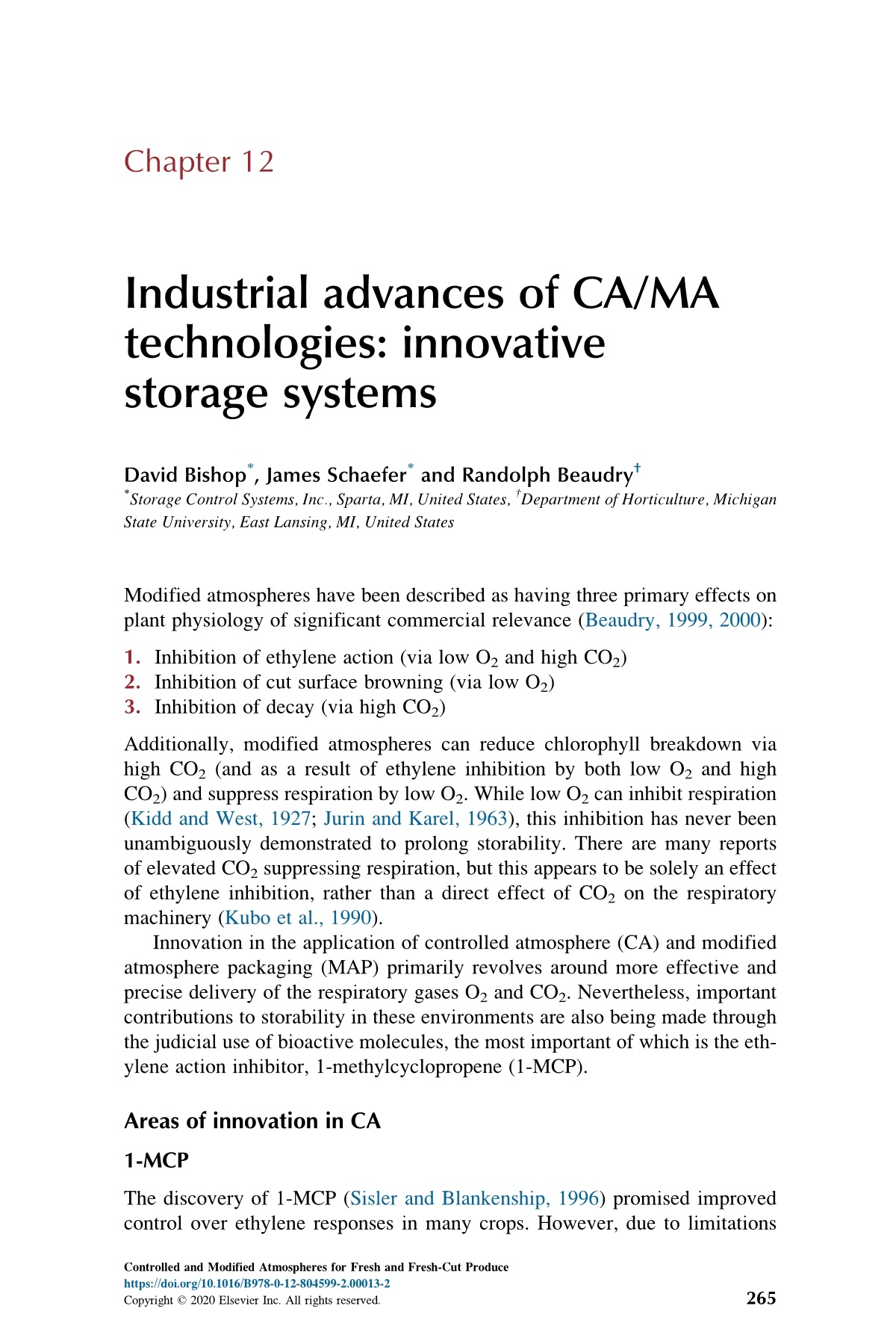
-
2/12
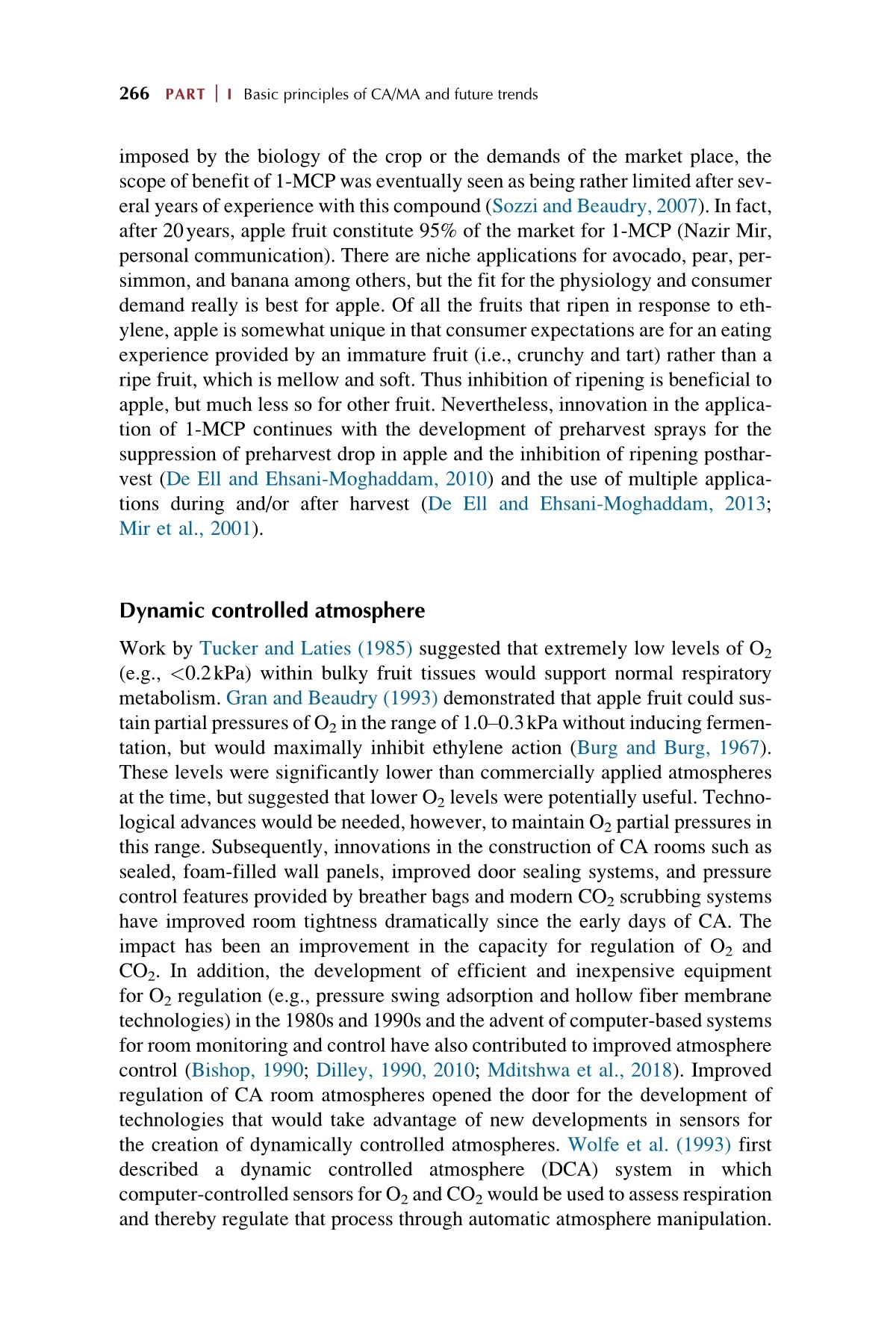
还剩10页未读,是否继续阅读?
继续免费阅读全文产品配置单
图拉扬科技有限公司为您提供《果蔬中贮藏保鲜检测方案(气调保鲜)》,该方案主要用于蔬菜中其他检测,参考标准《暂无》,《果蔬中贮藏保鲜检测方案(气调保鲜)》用到的仪器有Labpod Mini气调保鲜试验系统、Safepod DCA 气调保鲜系统。
我要纠错
推荐专场
相关方案


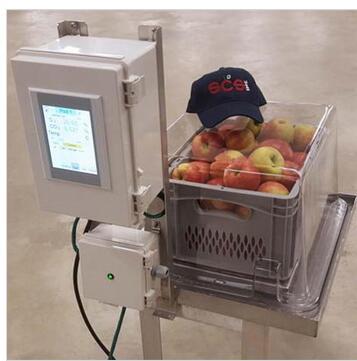
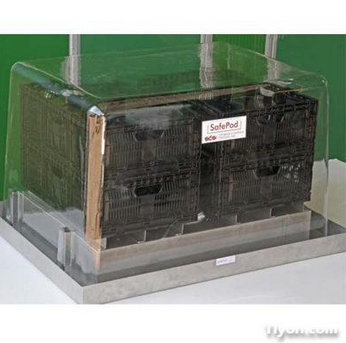



 咨询
咨询